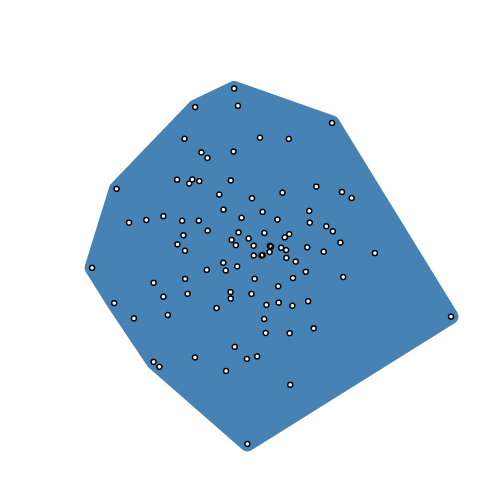d3-polygon
This module provides a few basic geometric operations for two-dimensional polygons. Each polygon is represented as an array of two-element arrays [[x1, y1], [x2, y2], …], and may either be closed (wherein the first and last point are the same) or open (wherein they are not). Typically polygons are in counterclockwise order, assuming a coordinate system where the origin ⟨0,0⟩ is in the top-left corner.
Installing
If you use npm, npm install d3-polygon. You can also download the latest release on GitHub. For vanilla HTML in modern browsers, import d3-polygon from Skypack:
<script type="module">
import {polygonHull} from "https://cdn.skypack.dev/d3-polygon@3";
const hull = polygonHull(points);
</script>For legacy environments, you can load d3-polygon’s UMD bundle from an npm-based CDN such as jsDelivr; a d3 global is exported:
<script src="https://cdn.jsdelivr.net/npm/d3-polygon@3"></script>
<script>
const hull = d3.polygonHull(points);
</script>API Reference
Returns the signed area of the specified polygon. If the vertices of the polygon are in counterclockwise order (assuming a coordinate system where the origin ⟨0,0⟩ is in the top-left corner), the returned area is positive; otherwise it is negative, or zero.
# d3.polygonCentroid(polygon) <>
Returns the centroid of the specified polygon.
Returns the convex hull of the specified points using Andrew’s monotone chain algorithm. The returned hull is represented as an array containing a subset of the input points arranged in counterclockwise order. Returns null if points has fewer than three elements.
# d3.polygonContains(polygon, point) <>
Returns true if and only if the specified point is inside the specified polygon.
# d3.polygonLength(polygon) <>
Returns the length of the perimeter of the specified polygon.
